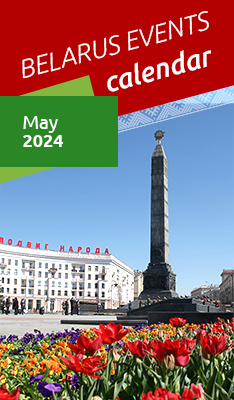Business news
Central bank names measures taken to support Belarusian economy amid sanctions

An archive photo
MINSK, 19 April (BelTA) - Chairman of the Board of the National Bank Pavel Kallaur spoke about the measures taken to support the economy amid the sanctions during a joint sitting of the House of Representatives and the Council of the Republic of the National Assembly of Belarus on 19 April, BelTA has learned.
Last year’s macroeconomic situation required a certain shift in focus and additional measures to adapt the national economy to the changes in the operating environment. Pavel Kallaur emphasized that all the available tools were used to support the economy. In particular, these were the interest rate policy, which has been clearly stimulating since mid-2022. “The National Bank raised the refinancing rate in order to prevent destabilization in the domestic market and to restrain inflationary processes after large-scale sanctions were imposed. It increased from 9.25% to 12% per annum on 1 March 2022 and remained unchanged until the end of the year. In turn, in March-April banks increased the yield on savings in local currency,” he said.
In May 2022, interest rates began to decline as the situation in the domestic market stabilized. As a result, the average cost of new ruble loans provided by banks and the Development Bank to legal entities was at 9.7% per annum in late 2022 “In real terms, the interest rates on loans were in the negative, which indicated the soft loan conditions for the real economy,” the chairman of the National Bank said.
The exchange rate factor also contributed to economic activity. In 2022, the real effective exchange rate of the Belarusian ruble decreased by 2.2%, which increased the price competitiveness of Belarusian exporters in foreign markets.
“A number of new counter-cyclical measures were taken to increase banks' ability to finance enterprises, which allowed banks to take on additional risks. Without these measures banks would not have been able to provide the economy with resource support to the extent that was actually provided. Financing of the real economy was carried out mainly in local currency, which was due to changes in foreign trade flows and currencies of payments,” Pavel Kallaur said.
Lending to the population was maintained. The amount of the loans issued by the banking system reached almost Br120 billion, up 13.3% more than in 2021. Almost Br111 billion was issued to business entities.
“Mechanisms of interaction between banks and their clients and comprehensive advisory assistance to the latter were developed in order to ensure smooth external payments. The integration of national financial information transmission systems of the National Bank of Belarus and the Bank of Russia ensured an uninterrupted exchange of financial messages in any currency between residents of the two countries. The government and the National Bank of Belarus took a number of decisions to solve export-import-related issues, including the settlement of foreign trade transactions in foreign cash,” the chairman of the Board of the National Bank said.







 print version
print version make home page
make home page add to bookmarks
add to bookmarks

